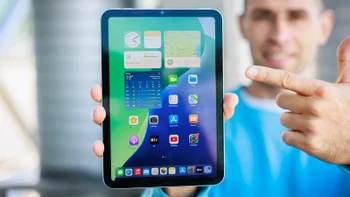The evolution of LG's G series

The new LG G7 ThinQ is not only LG's most advanced phone and its first phone with a notch, it's also the 7th phone in one of the most successful series of flagship phones that dates way back to 2012.
But how did LG get to where it is with the LG G series?
We look back at the history of the LG G series, starting with the LG Optimus G from 2012 and going through every single new model launched until now. In this walk down memory lane, you will see how LG evolved its own idea of a flagship phone, jumping from extravagant ideas like that of the modular G5 to adopting the unique wide-angle secondary camera and other decisions. Let's waste no time and get started right away...
LG Optimus G (2012)
Off to a strong start with quad-core processor and 4G LTE connectivity

The LG Optimus G was not the first high-end phone that LG attempted making - before that were the LG Optimus 2X and the LG Optimus 4X - but this is the one that started the LG G series and it was actually one of the first phonse to feature a quad-core processor and 4G LTE connectivity.
These two features in combination set this phone apart from the competition: the powerful processor of the LG Optimus G was definitely its highlight and strongest point, but in our review back in the day we found the phone did not quite excel in camera performance. LG's interface back in the day also looked way different and then was also the time when some phone makers like LG would just cram every feature they could think in their interface, resulting in a bloated experience. Nonetheless, the LG Optimus G laid the solid foundation for the future G series, with its biggest hit coming next year.
LG G2 (2013)
Establishing the staples of the G series: all buttons on the back and Knock On features

When we think about the most successful LG G series phones, the LG G2 is one of the devices that comes to mind.
While it was still a plastic phone as most other Android phones in that time, the LG G2 featured a 5.2-inch display with very small bezels and a very compact footprint. This was one of the most impressive features of the phone and even if you pick it up today, you will see that it almost feels like those bezel-less phones that are so trendy in 2018.
The LG G2 also established some of the staples of the LG G series: it was the first one to feature its physical buttons on the back, a strange position that allowed for the nearly bezel-less front. LG also pioneered various screen tapping gestures like the Knock On functionality that allowed users to knock twice on a locked screen to wake it up and when using it, tap twice to lock it. This feature first came on the LG G2, but was quickly adopted by many others and is almost seen as a standard now in Android land.
The LG G2 also featured an excellent camera and was one of the first phones to support high frame rate recording with its capability to shoot 1080p60 videos that looked extra smooth. Overall, this was probably the highest-rated LG phone we have ever tested and one of the most popular LG devices ever.
LG G3 (2014)
The next generation: one of the first in the world with a Quad HD screen

The LG G3 had some big shoes to fill: after the successful LG G2, LG had to step up its game even further.
The LG G3 was LG's first phone with a truly big screen: a 5.5-inch display at the times was considered giant, but what was more interesting about this screen was that it was one of the first in the world to feature a 1440 x 2560-pixe Quad HD resolution for some impressive sharpness. This leap in resolution, however, was spoiled by LG artificially adding a strong oversharpening effect, so the overall look of this screen was not quite as revolutionary. In addition to that, the LG G3 had a weak battery that barely lasted a day and many users complained.
All of those dents and bruises spoiled the impression from the excellent LG G2, but one year passed by and it was time for LG's next phone.
LG G4 (2015)
Loved by many for its unique, stylish eather back and great camera

The LG G4 was a device that some people loved and swore by, and others just did not like at all. It was polarizing and the reason for that must have been that for the first time, LG used a leather back cover for this phone. The back cover was actually easily removable and you also had the option to get the phone with a plastic back, but it was the signature leather back that made the LG G4 really stand out. While this leather cover did age with time, it provided a warm feel unlike that of metal or plastic phones, and appealed to many people.
The LG G4 also had a really impressive camera that was quick to start with a convenient double press of the volume down key gesture.
The phone also remained one of the few phones at the time with a removable battery and a microSD card support, two power user features that were quickly disappearing from flagship phones. It also fixed a lot of the shortcomings of the LG G3, but LG could not quite get battery life right and it was still below average.
LG G5 (2016)
A radical turn to modularity and the first with a super wide angle camera

After the LG G4, in 2016, LG made a radical turn toward something completely different: the LG G5 ditched the leather back and embraced an all-new metal design with the brave idea of modularity.
LG imagined a world of snap-on accessories that would attach to the back of the phone: things like an easily removable battery, a high-resolution audio DAC, and others were in the making. The idea, however, was short-lived and not well accepted by customers.
This radical redesign left the LG G5 with a small battery too, and the handset could barely last a day, an issue that LG seemed to carry from generation to generation of its flagship phones.
What did stick with LG, however, was the dual camera setup that it introduced here: in addition to the main camera, LG introduced a super wide angle camera to the G5. This camera would have a wide angle of view, similar to that of a GoPro or other action cameras that would allow users to see some previously impossible perspectives. This was a great camera for landscape shots, architecture shots or vlogging, and remains one of the favorite feature of many LG adopters.
LG G6 (2017)
A swift departure from modularity and away from radical ideas

After the flop that was the LG G5, the company learned its lessons and in 2017 it launched the LG G6 that was completely redesigned with no modularity in sight. It was more traditional, more mature and less radical.
It kept the dual camera setup and adopted a more modern glass and metal design with a focus on durability, but strangely, LG rushed it to market with last year's Snapdragon 821 chip rather than waiting for the newer and much more powerful Snapdragon 835. This again proved detrimental for the experience: the Snapdragon 835 provided much better battery life and performance and the LG G6 could not benefit from those advances in technology.
The LG G6 also improved the secondary wide-angle camera for less distortion and improved an always-on display feature that it had introduced with the G5.
LG G7 ThinQ (2018)
New times: welcome the notch and AI

Fast forward to 2018, and we have the LG G7 ThinQ, the first rebranding of sorts to the LG series since the very first LG Optimus G.
In an attempt to bring it closer to its other products like refrigerators and washers, LG adopts the ThinQ branding for the G7. The LG G7 features a notched design and a larger and taller display, and LG officially confirms that its strategy is to stick with LCD screen for the G series, while keeping its more pricey OLED displays for the V series of big phones.
The LG G7 ThinQ puts the focus on artificial intelligence in the camera and on improved sound quality as the whole phone now acts as a resonance chamber for the single bottom-firing speaker of the G7.
Follow us on Google News













Things that are NOT allowed:
To help keep our community safe and free from spam, we apply temporary limits to newly created accounts: